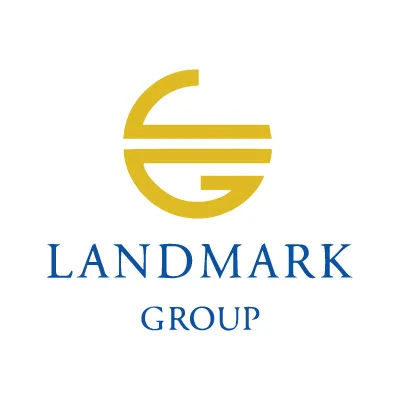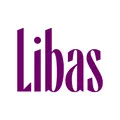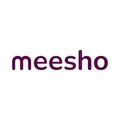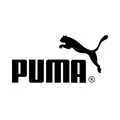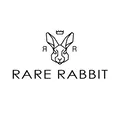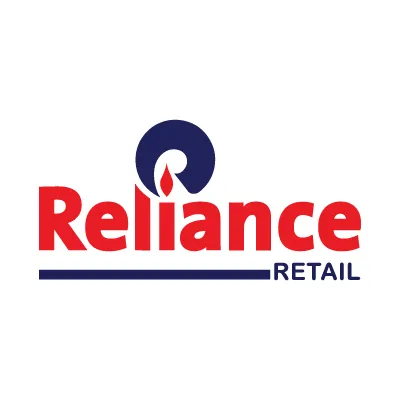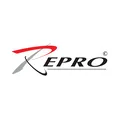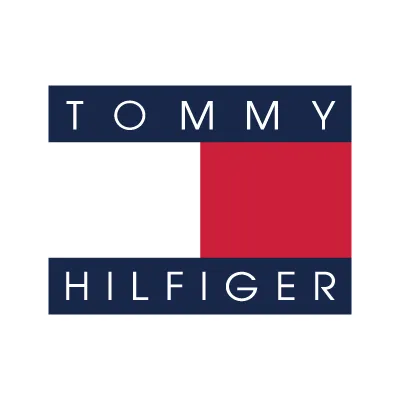
Markdown Optimization
Maximize margins and sell-through with Increff Markdown Optimization
Recommends strategic markdowns to clear slow-moving inventory and boost sales—without hurting margins or budgets.
Analyzes sales velocity, inventory, and seasonality at style/SKU level to determine the optimal timing and discount.
Talk to an Expert6%
Margin improvement on fast-moving products
9%
Discount reduction across the season
~12%
Improvement in Sell Through
4x
Improvement in decision-making frequency
Markdown Optimization for Seasonal and Event-Driven Retail
In-Season Discounting
EOSS discounting
SKU/Size-Level Discounting
Channel-specific markdowns
Special Event Discounting
Discover Our Markdown Optimization Software in Action
View More Case Studies

This case study reveals how Increff’s robust solutions are helping global brands not just keep up, but get ahead. First, discover how Increff revolutionized a leading Indian fashion retailer, helping them slash their buying cycle from a sluggish six months to a dynamic one month, enabling weekly fresh drops and unparalleled agility.
Then, learn how a world-renowned sports and lifestyle brand used Increff to power its rapid global expansion—from its initial partnership in India to a lightning-fast rollout at its European headquarters in just two months. This is more than just inventory management. It’s a look into the future of retail.


It’s almost impossible to sell deadstock after an EOSS sale. WRONG.
We, at Increff found a way. We recently helped a brand not only sell its excess stock, but do so profitably, while optimizing inventory health, and logistical costs. Want to know how?


A leading designer lifestyle brand used Increff Markdown Optimization to calculate ideal store-level discounts and determine the reordering of bestsellers for maximum ROS. Based on the ongoing performance, the tool was able to suggest an increase or decrease in discount percentages for the right set of styles. It was able to access the correct selling price of the style, across all points of sales, to achieve higher sales (by increasing discounts), and better margins (by reducing discounts). To reduce sales loss and improve margins, bestsellers or outperformers were identified at each point of sale so accurate quantities can be reordered on a timely basis for brands to capitalize on the ongoing trend and upcoming demand. Challenges: Identify products that deserve a change in selling price and select the right set of products that need to be discounted to deliver a higher rate of sale.
Excessive discounting of products to be avoided to ensure set margins are not severely devalued if further discounting does not bring an increase in sales.
Identify which styles are good designs, or pick up trends, so they can be re-ordered for better sales.
Make discounting and re-ordering a regular efficient activity for each store.
Solutions: Increff Markdown Optimization automated data-driven decision-making by taking granular scientific inputs, at a store-level, to deliver concrete measurable output in the form of more accurate discount percentages and appropriate reorder quantities. Dynamic pricing – Styles that were already at a discount, Markdown Optimization helped identify if the price point was right or not. The tool accessed important factors of a style, like ROS, availability, health, stock cover, age, etc. to identify which needed an increase in discounts, at a comparative level, and recommended the right discount percentage that would boost sales and revenue. It also helped the brand identify fast movers that were running low on stock, where a cut in discount percentage would result in higher margins. The brand had the flexibility to cap discounting to prevent further reduction in price if discounting was not impacting sales. This helped them prevent the devaluation of products.
Bestseller reordering – As the tool monitors the daily performance and stock levels of the style, it helps identify styles that are fast movers and bestsellers. It suggested designs that should be capitalized and kept longer on the shelf for higher returns. It helped identify a style’s true sales potential by correcting for unavailability and liquidation scenarios. It took into account the lead time required to procure a style and factored that when suggesting reordering quantities so orders were placed well in advance and sales loss was minimized. It helped determine the accurate quantity that needed to be reordered for the desired shelf life- e.g 60 days, 90 days, to improve overall margins. It also helped identify styles that were picking up and where the brand could increase profits by selling more at different points in sales. Impact delivered in 14 days of implementation: 71% ROS improvement with only a 10% discount increment for low ROS styles at the offline stores. The same set of styles had seen degrowth in other stores. ~6% margin improvement for fast movers at online Point of Sales. 2x increase in the frequency of decision making. They moved from making monthly decisions to making discounting decisions every 14 days. Successfully handled in-season, Event, and Old season liquidation scenarios
Unified Fulfillment
Fulfill orders across D2C, e-commerce, quick commerce, marketplaces, wholesale, and offline retail from a single WMS platform.
End-to-End Operations
Manage high SKU variety, large inventory volumes, all order types, and channel-specific needs with robust receiving, putaway, picking, packing, dispatch, and returns workflows.
Effortless Scalability
Easily scale to multiple fulfillment centers, dark stores, mother hubs, and regional warehouses from a single WMS instance.
Marketplace Excellence
Boost performance on every marketplace with seamless fulfillment, top seller ratings, and zero penalties.
Clear Aged Stock Quickly with Right discount at the Right Time
- Adaptive Discount Control
- Performance-Driven Discount Recommendations
- Flexible Business Rules and Guardrails
- Event-Based Markdown Scenarios
- Channel-Specific Markdown Optimization
Adaptive Discount Control

- Dynamic Discount Management: Suggests increasing or decreasing markdowns based on real-time performance and inventory health.
- Margin Protection: Improves margins on fast-moving products by preventing unnecessary discounting across seasonal categories.
- Elasticity-Based Pricing: Uses price elasticity to limit discounts and prevent wasted markdowns.
- Adaptive Promotion Control: Enables rapid rollback of discounts if sales don’t improve as expected.
Performance-Driven Discount Recommendations

- True ROS: Analyzes actual selling velocity without liquidation noise or seasonal promotional distortions.
- Ageing: Considers time since product launch and planned lifecycle to prioritize older inventory for timely clearance.
- Sell-through: Measures sell-through percentages to identify underperforming inventory requiring markdown attention.
- Size Set Health: Evaluates broken size sets that impact customer experience and merchandising effectiveness.
- Performance Benchmarks: Compares against category benchmarks to identify outliers requiring action through statistical pattern recognition.
- Custom Groupings: Creates attribute groups to compare similar products for consistent markdown strategies.
Flexible Business Rules and Guardrails

- Discount Targets: Aligns markdowns with company-level discount targets.
- Multi-level Configuration: Sets start levels, caps, and increments at category, brand, and style level.
- Automated Trigger System: Applies ROS cutoffs and sell-through benchmarks to trigger changes automatically.
- Style-level Overrides: Allows manual overrides for styles needing special handling.
- Flexible Discounting: Supports different discounting frequencies and guardrails across channels and stores.
- Business Adaptability: Covers varied business scenarios with customizable inputs and parameters.
Event-Based Markdown Scenarios

- Liquidation Management: Manages in-season, event-based, and end-of-season liquidation with pre-set rule.
- Promotional Planning: Takes event calendars as input with pre-defined markdown strategies.
- Strategic Discount Control: Adjusts depth and timing based on event type and business objectives.
- Special Event Clearance: Balances clearance goals with profitability during key retail moments.
- Seasonal Transition: Manages inventory shifts between seasons to optimize stock levels.
Channel-Specific Markdown Optimization

- Channel Strategy: Applies different markdown approaches for e-commerce versus physical retail locations based on channel-specific business constraints.
- SKU-Level Control: Enables SKU-level discounting for granular inventory management down to individual size and color combinations.
- Flexible Cadences: Supports daily, weekly, or monthly markdown cadences based on business needs and operational capabilities.
- Store Specific Discounting: Implements store-specific discounting based on local performance metrics and regional customer purchasing behaviors
- Online Integration: Integrates with brand.com and marketplaces for seamless implementation across digital channels without manual intervention

Plug and Play with our other
Merchandising Solutions
Allocation and Replenishment

Reduce loss of sales and overstocking due to unavailability, size cuts, and stock-outs by ensuring smart, data-driven allocation and replenishment
Markdown Optimization


Boost sales and margins by leveraging real-time style and stock data for targeted, data-driven discount suggestions
Regional Utilization


Fulfill local demand faster and reduce last mile delivery costs with optimized inventory distribution across all multi-warehouse and darkstore networks.
Co-Pilot


Improve over 4x operational efficiency with intelligent reports and visual dashboards, enabling exception-based decision making.
- Allocation and Replenishment
- Markdown Optimization
- Regional Utilization
- Co-Pilot


.webp)
.webp)




.webp)



